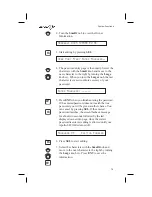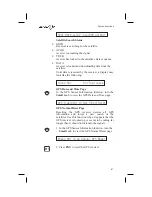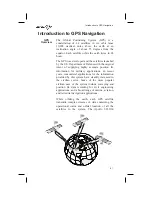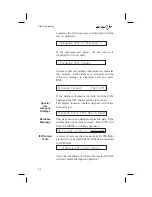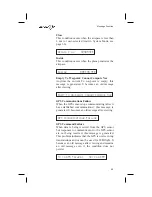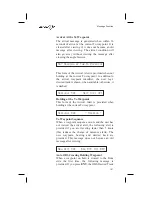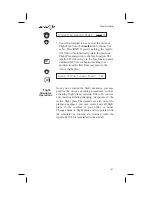
receives this data stream and processes the
information to determine which satellites are
“visible” to the receiver’s antenna. With this
determination made, the receiver chooses satellites
to calculate a position fix. Using information
transmitted from three or more satellites, the unit
can
calculate
latitude
and
longitude
(usually
abbreviated Lat/Lon); with four or more satellites,
GPS altitude can also be calculated.
GPS
System
Accuracy
The GPS allows a high degree of position fix
accuracy. The system can produce a position fix
accurate to within less than one meter. Due to
concern for national security, the U.S. Department
of Defense introduces constant errors to the
transmitted satellite data to degrade the accuracy of
the system. Called
Selective Availability
, this
practice limits GPS position fix accuracy to about
100 meters, although the relative position of the
satellites to one another, their elevation above the
horizon, and other factors can also affect accuracy
of the position fix. Under optimal conditions,
accuracy can improve to within 10 meters. GPS
position fix accuracy is not affected by atmospheric
conditions.
GPS altitude is based on a mathematical model of
the sphere of the earth. Including intentional
degradation,
GPS
altitude
may
differ
from
barometric altitude by several hundred feet.
Summary
Unlike navigation aids providing a position fix with
data from land-based sources, the Apollo GPS can
provide an accurate position fix over land or sea
anywhere in the world. The unit includes an
extensive database of useful waypoint
information
and allows you to create up to 200 “customized”
waypoints of your own. With the power of this
navigation device in the cockpit, you can easily
navigate with unsurpassed accuracy.
92
Introduction to GPS Navigation
Summary of Contents for Apollo SL50
Page 1: ......
Page 18: ...Notes 8 Apollo SL50 60 Features...
Page 92: ...Notes 82 System Functions...
Page 118: ...Notes 108 Flight Simulator...
Page 133: ......


